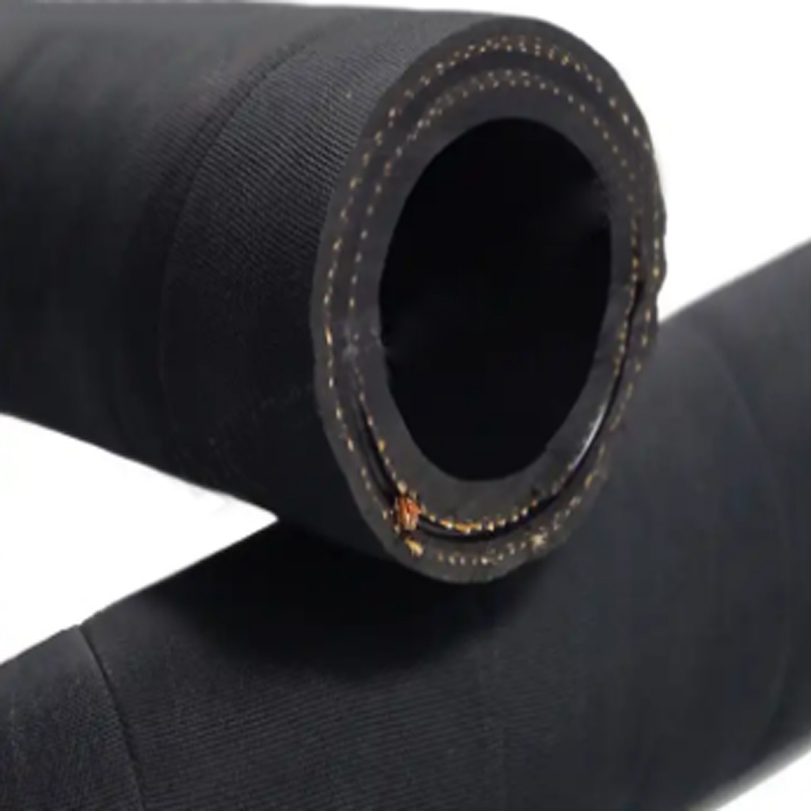335345435
Sep . 25, 2024 03:03 Back to list
hydraulic hose end fittings specifications pdf
Understanding Hydraulic Hose End Fittings Specifications
Hydraulic systems play a crucial role in various industries, including construction, manufacturing, and transportation. At the heart of these systems lies the hydraulic hose, which is used to transport fluid under pressure. To ensure the efficiency and safety of hydraulic systems, selecting the correct hose end fittings based on specifications is essential. This article will provide an overview of hydraulic hose end fittings, their specifications, and their significance in hydraulic applications.
What Are Hydraulic Hose End Fittings?
Hydraulic hose end fittings are components that connect hoses to other equipment and structures within hydraulic systems. They are crucial for creating leak-proof connections, maintaining the integrity of the fluid system, and facilitating the movement of hydraulic fluid. End fittings are typically made from robust materials such as steel, stainless steel, or brass, which can withstand the high pressures and corrosive environments commonly found in hydraulic applications.
Types of Hydraulic Hose End Fittings
There are several types of hydraulic hose end fittings, each designed for specific applications. Some of the common types include
1. JIC (Joint Industry Council) Fittings Known for their 37-degree flare, JIC fittings provide reliable leak-proof connections. They are widely used in high-pressure hydraulic systems.
2. NPT (National Pipe Tapered) Fittings These fittings feature a tapered thread that creates a seal as they are tightened. NPT fittings are suitable for low to medium-pressure applications.
3. ORFS (O-Ring Face Seal) Fittings ORFS fittings utilize an O-ring to create a seal, making them ideal for high-pressure applications. They are often used in mobile equipment and construction machinery.
4. BSP (British Standard Pipe) Fittings Commonly used outside of North America, BSP fittings come in parallel or tapered designs and are versatile for various applications.
Specifications of Hydraulic Hose End Fittings
When selecting hydraulic hose end fittings, several specifications must be taken into account. These specifications ensure compatibility and performance within the hydraulic system. Key specifications include
1. Material The choice of material affects the durability and resistance to corrosion and wear. Steel fittings are commonly used for high-pressure applications, while brass fittings are suitable for lighter-duty applications.
hydraulic hose end fittings specifications pdf

2. Size Fittings come in various sizes, and selecting the correct size is vital for a proper fit and to avoid leaks. The size is typically denoted by the diameter of the hose and the thread type (e.g., 1/2 inch, 3/4 inch).
3. Pressure Rating Hydraulic hoses and fittings are rated for various pressure levels, often expressed in pounds per square inch (PSI). It is crucial to choose fittings that can handle the pressure exerted by the hydraulic fluid.
4. Temperature Rating The operating temperature range of the fittings should match the hydraulic system requirements to avoid failure due to thermal expansion or contraction.
5. End Connections The type of end connection (e.g., male, female, swivel) is important for compatibility with other components in the hydraulic system. Proper alignment and fit ensure effective sealing and prevent leaks.
6. Thread Type Understanding the thread type is crucial for ensuring compatibility during assembly. Threads such as NPT, JIC, and BSP have different profiles and sealing mechanisms.
Importance of Proper Selection
Selecting the correct hydraulic hose end fittings is critical for several reasons
1. Safety Incorrect fittings can lead to fluid leaks, which may cause hazardous conditions, including slips, falls, or equipment failure.
2. System Performance Proper fittings contribute to the overall efficiency of the hydraulic system, ensuring optimal fluid flow and pressure management.
3. Maintenance Choosing high-quality fittings reduces the need for frequent repairs and replacements, ultimately saving time and costs in maintenance.
4. Compliance Many industries are subject to regulatory standards regarding hydraulic systems. Ensuring that fittings meet these specifications helps maintain compliance and safety standards.
Conclusion
In conclusion, hydraulic hose end fittings are a vital component of hydraulic systems, and understanding their specifications is essential for effective and safe operations. By carefully selecting the appropriate fittings based on material, size, pressure rating, and other specifications, professionals can ensure optimal performance and longevity of hydraulic applications. As industries continue to evolve, staying informed about the latest advancements in hydraulic technology will contribute to enhanced safety and efficiency in hydraulic systems.
-
Twin Hydraulic Hose | High Pressure & Durable
NewsJul.21,2025
-
Discount Hydraulic Hose Factories | Top Quality & Discounts
NewsJul.20,2025
-
EN856 4SP Hydraulic Hose - High Pressure & Durable
NewsJul.20,2025
-
SAE 100 R17 Black Smooth Cover Hydraulic Hose
NewsMar.07,2025
-
SAE 100 R17 Black Smooth Cover Hydraulic Hose
NewsMar.07,2025
-
SAE 100 R17 Black Smooth Cover Hydraulic Hose
NewsMar.07,2025



